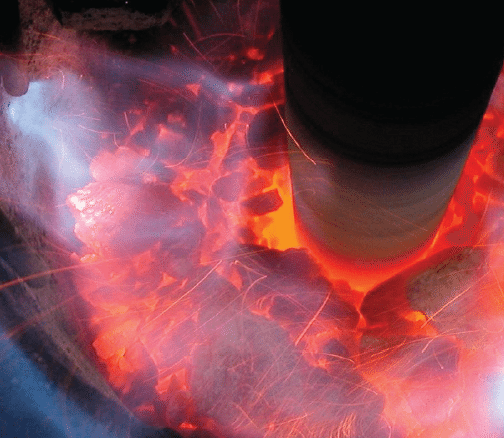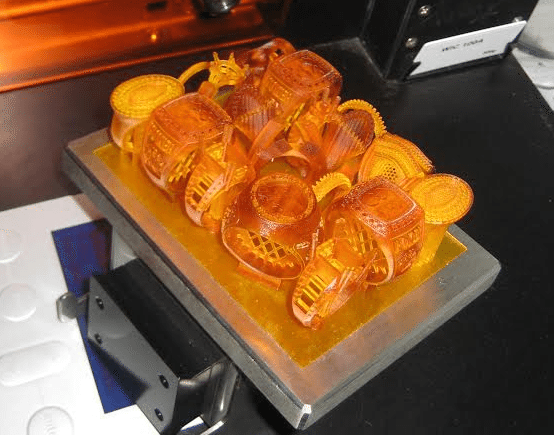Lost wax casting also known as investment casting is an ancient process used within the jewellery industry. We have given you a simple overview of the process so you have a better understanding of how your bespoke ring has been made. Firstly your ring is designed using 3D modelling software, which is then grown using a 3D printer to create a wax model. The wax model is set inside a steel flask and covered with plaster investment with a funnel shape to reach the wax through the hardened plaster. The flask is put into a kiln and while the wax is burned out from inside the plaster, the plaster is also cured. The flask is then placed in a casting machine where the void left behind in the plaster is filled with molten metal using tremendous speeds and gravity. Once cooled you are left with a raw casting of your design and from there the finishing process starts.
1. Designing
The CAD process begins by drawing the ring in a software program after a consultation with your dedicated designer. This produces a 3D working model to show every detail of the piece.
2. 3D Printing
After the CAD file is produced the ring is then realised into a wax model using a rapid prototype machine. These are often referred to as growing machines as they grow the model from a liquid resin or wax through a thin layer deposition to create the finished result. The wax model is now complete. There are now a variety of 3D printing and growing methods.
3. Pouring the Investment
The wax model is placed within a steel flask and then is filled with plaster that hardens around the model after being fired in a special kiln.
4. Lost-Wax Process
Once invested the model is burnt out of the flask creating a negative imprint of the ring. The flask is placed in a machine spinning at high speeds (centrifugal) where molten metal is then poured into the void were the wax model used to be. This is where the name ‘lost’ comes from as the wax is burned out in this process and therefore, ‘lost’ forever.
5.The Cast Piece
The casting from the CAD wax model has now been cast in metal and the finishing process can begin.
6. Preparing the ring
The ring is carefully removed from the sprue, which are the funnels and rod channels that allow the metal to flow into intricate designs, using a piercing saw and the casting is prepared for finishing. This consists of plenty of wet and dry sanding to remove any markings so a smooth even finish is achieved across the ring. Once this is completed the ring goes to a stone setter.
7. Setting the Stones
The stones are all set by hand in the workshop by trained setters. Some of the more complex designs may have 50 or 60 pave set stones so these are checked periodically through the stone setting to ensure the highest standards are met. Much of the finer stone setting is carried out under a microscope.
8. The Final Polish
The last step in production before the ring goes through its final inspection is the polishing. This finishes the ring off to its true beauty and once a good polish is complete the ring or jewelry is now ready to be worn.








